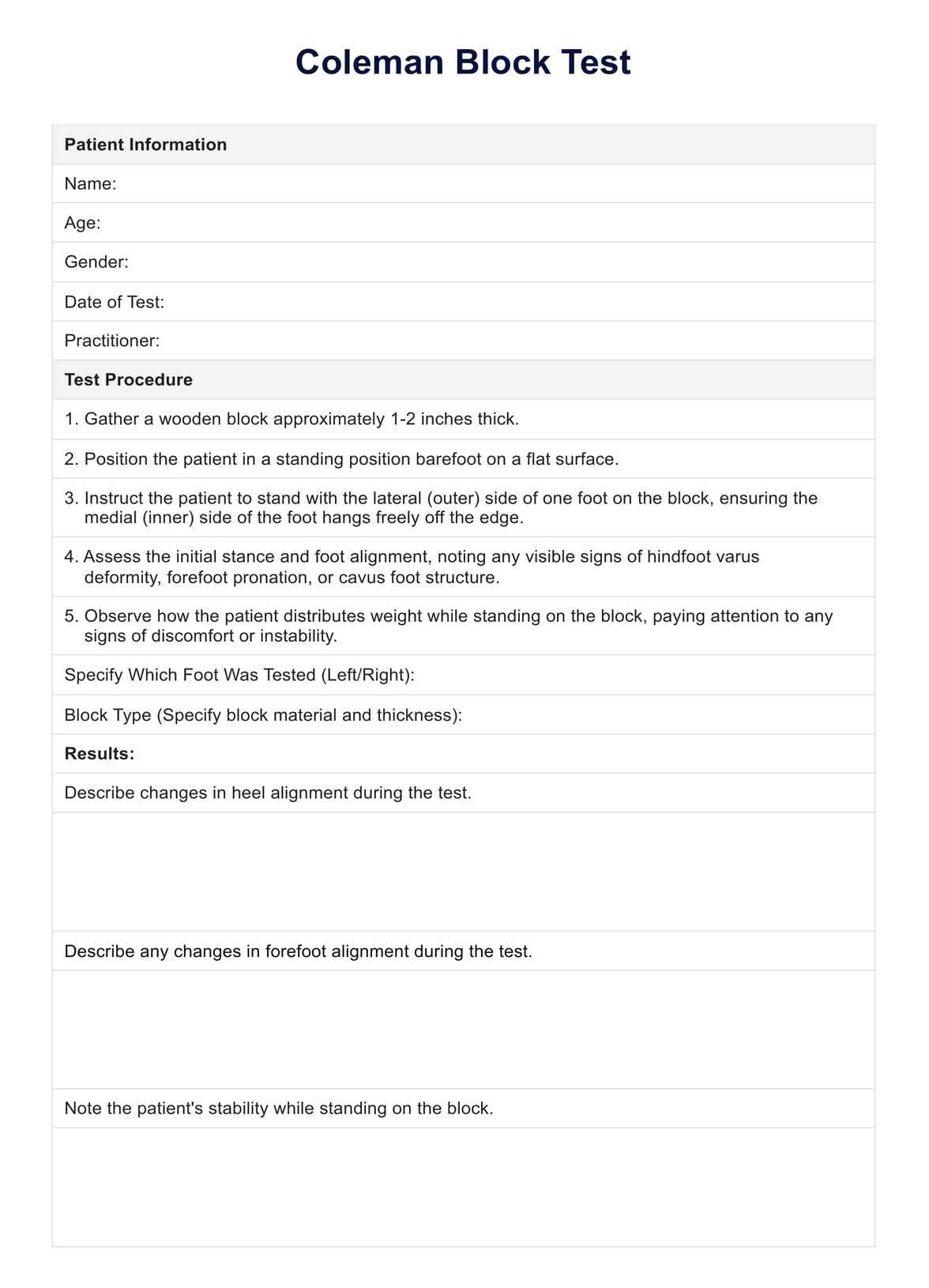Yes, without appropriate management, the condition can worsen over time, leading to increased pain, mobility issues, and a higher risk of injuries such as ankle sprains.

Coleman Block Test
Streamline the process of documentation during a Coleman Block Test with a patient by downloading our Coleman Block Test template today!
Use Template
Coleman Block Test Template
Commonly asked questions
Yes, wearing supportive footwear, using orthotics, and engaging in targeted exercises can help manage the symptoms and improve foot function. Physical therapy may also help strengthen the muscles around the foot and ankle.
You should seek medical attention if you experience persistent pain in the foot or ankle, frequent ankle sprains, difficulty walking, or any noticeable changes in gait or foot alignment.
EHR and practice management software
Get started for free
*No credit card required
Free
$0/usd
Unlimited clients
Telehealth
1GB of storage
Client portal text
Automated billing and online payments











